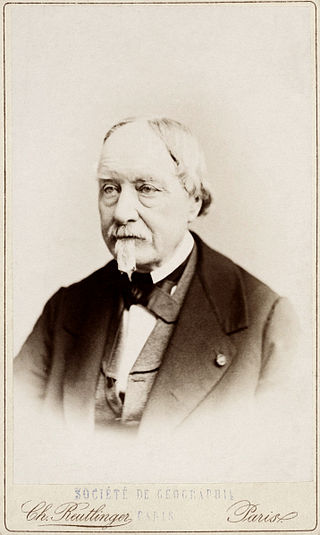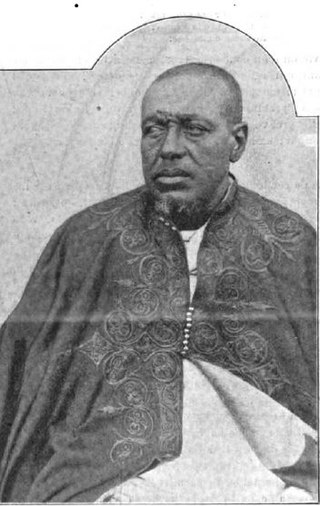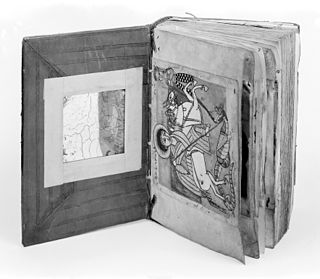The topic of this article may not meet Wikipedia's notability guideline for biographies .(September 2023) |
Casimir Mondon-Vidailhet (February 1, 1847 - November 30, 1910) was a French journalist, philologist and author. [1]
The topic of this article may not meet Wikipedia's notability guideline for biographies .(September 2023) |
Casimir Mondon-Vidailhet (February 1, 1847 - November 30, 1910) was a French journalist, philologist and author. [1]
François Marie Casimir Mondon-Vidailhet was born in Saint-Gaudens, in Haute-Garonne. [2]
He was journalist for Le Temps . In this role, he left France for Ethiopia in 1891, and stayed there from 1892 to 1893 and from 1894 to 1897. [3]
He was professor at École nationale des langues orientales vivantes, [4] where he was the first occupant of the chair of Amharic, which he taught from 1898 to 1910. He was succeeded by Marcel Cohen. [5]
Works by Mondon-Vidailhet include: [6]

Harari is an Ethiopian Semitic language spoken by the Harari people of Ethiopia. Old Harari is was a literary language of the city of Harar, a central hub of Islam in Horn of Africa. According to the 2007 Ethiopian census, it is spoken by 25,810 people. Harari is closely related to the Eastern Gurage languages, Zay, and Silt'e, all of whom are believed to be linked to the now extinct Semitic Harla language. Locals or natives of Harar refer to their language as Gēy Sinan or Gēy Ritma'language of the City'. According to Wolf Leslau, Sidama is the substratum language of Harari and influenced the vocabulary greatly. He identified unique Cushitic loanwords found only in Harari and deduced that it may have Cushitic roots.

Aostan French is the variety of French spoken in the Aosta Valley, Italy.

Afäwarq Gäbrä Iyäsus was an Ethiopian writer, who wrote the first novel in Amharic, Ləbb Wälläd Tarik, . Bahru Zewde writes, "Few people before or after him have demonstrated such superb mastery of the Amharic language. Few have ventured with such ingenuity into the hidden recesses of that language to come out with a wealth of vocabulary and idiom one scarcely thought the language possessed. Afäwarq is nonetheless a controversial figure for having supported the Italians during both the First and Second Italo-Ethiopian Wars.

Blatten Geta Heruy Welde Sellase was an Ethiopian diplomat who was Foreign Minister of Ethiopia from 1930 to 1936 and a writer in Amharic. Bahru Zewde observes that his career "stands out as the great success story ... of the early twentieth-century intellectuals," then continues, "His prolific literary record, his influence with Tafari-Hayla-Sellase and his ascent in the bureaucratic hierarchy were all characterized by an unchequered progression. Edward Ullendorff concurs in this evaluation, describing his oeuvre as "a considerable and distinguished literary output."

William McGuckin, known as Baron de Slane was an Irish orientalist. He became a French national on 31 December 1838. and held the post of the Principal Interpreter of Arabic of the French Army from 1 September 1846 until his retirement on 28 March 1872. He is known for publishing and translating a number of important medieval Arabic texts.

Jean Paul Louis François Édouard Leuge-Dulaurier was a French Orientalist, Armenian studies scholar and Egyptologist.

Hermann Zotenberg was an orientalist and Arabist.
Marcel Samuel Raphaël Cohen was a French linguist. He was an important scholar of Semitic languages and especially of Ethiopian languages. He studied the French language and contributed much to general linguistics.

Abbé Marius Chaîne was a French scholar of Ethiopic and Coptic philology.
Stefan Strelcyn was a Polish scholar of Ethiopian Studies and a Semitist.
Joseph-Émile Baeteman was a French missionary and religious writer. He wrote a dictionary of Amharic that was a pioneer work and became standard for the study of that language.
The Argobba are an ethnic group inhabiting Ethiopia. A Muslim community, they are spread out through isolated village networks and towns in the north-eastern and eastern parts of the country. Group members have typically been astute traders and merchants, and have adjusted to the economic trends in their area. These factors have led to a decline in usage of the Argobba language. Argobba are considered endangered today due to exogamy and destitution as well as ethnic cleansing by the Abyssinian state over the centuries.
Natalis de Wailly was a French archivist, librarian and historian.
The Harla, also known as Harala, Haralla are an ethnic group that once inhabited Ethiopia, Somalia, and Djibouti. They spoke the now-extinct Harla language, which belonged to either the Cushitic or Semitic branches of the Afroasiatic family.

Mersha Nahusenay was an Ethiopian reformist and pioneer of change who made important contributions to the modernization and independence of Ethiopia. One of the closest advisors to Emperor Menelik II, he went on to become the first governor of Dire Dawa, and surrounding areas (1902–1905). Prior to that he was governor of the strategic and frontier district of Jaldessa (Gildessa) and its environ where he also held the key position of Head of Customs. His public career lasted over three decades from the time of Menelik II until the reign of Haile Selassie. Mersha understood French and was open to European ideas of progress earning him admiration abroad. His most enduring legacy is perhaps the supervision of the day to day activities of the construction, maintenance and security of the first railroad which he oversaw at the request of Menilek. Mersha belongs to a generation of Ethiopians who took advantage of the relative stability of the late 19th – early 20th century to implement a series of wide-ranging political, military, economic and social reforms, paving the way to the founding of present-day Ethiopia.
Clovis Brunel was a French philologist and writer.

Ethiopian manuscript collections are found in many parts of the world, the monasteries and modern institutions in Ethiopia maintaining extensive collections with some monasteries still centres of manuscript production.
Amédée Henri Gustave Noël Gastoué was a French musicologist and composer.
GaradAbun Ibn Adash or Abogn ibn Adish was a Harari Emir of the Adal Sultanate. He was the de facto ruler of Adal reducing the Adal sultan to nominal leader. In this period Sultan Abu Bakr ibn Muhammad would move Adal's capital to Harar city after killing emir Abogn in order to regain influence in Adal.

The Battle of Fatagar was a reprisal conflict between the previous participants of the Ethiopian–Adal War. It was fought between the forces of the Adal Sultanate led by Nur ibn Mujahid, and the Ethiopian Empire under Emperor Gelawdewos. The Ethiopian Emperor was later killed by Adal forces in this battle.